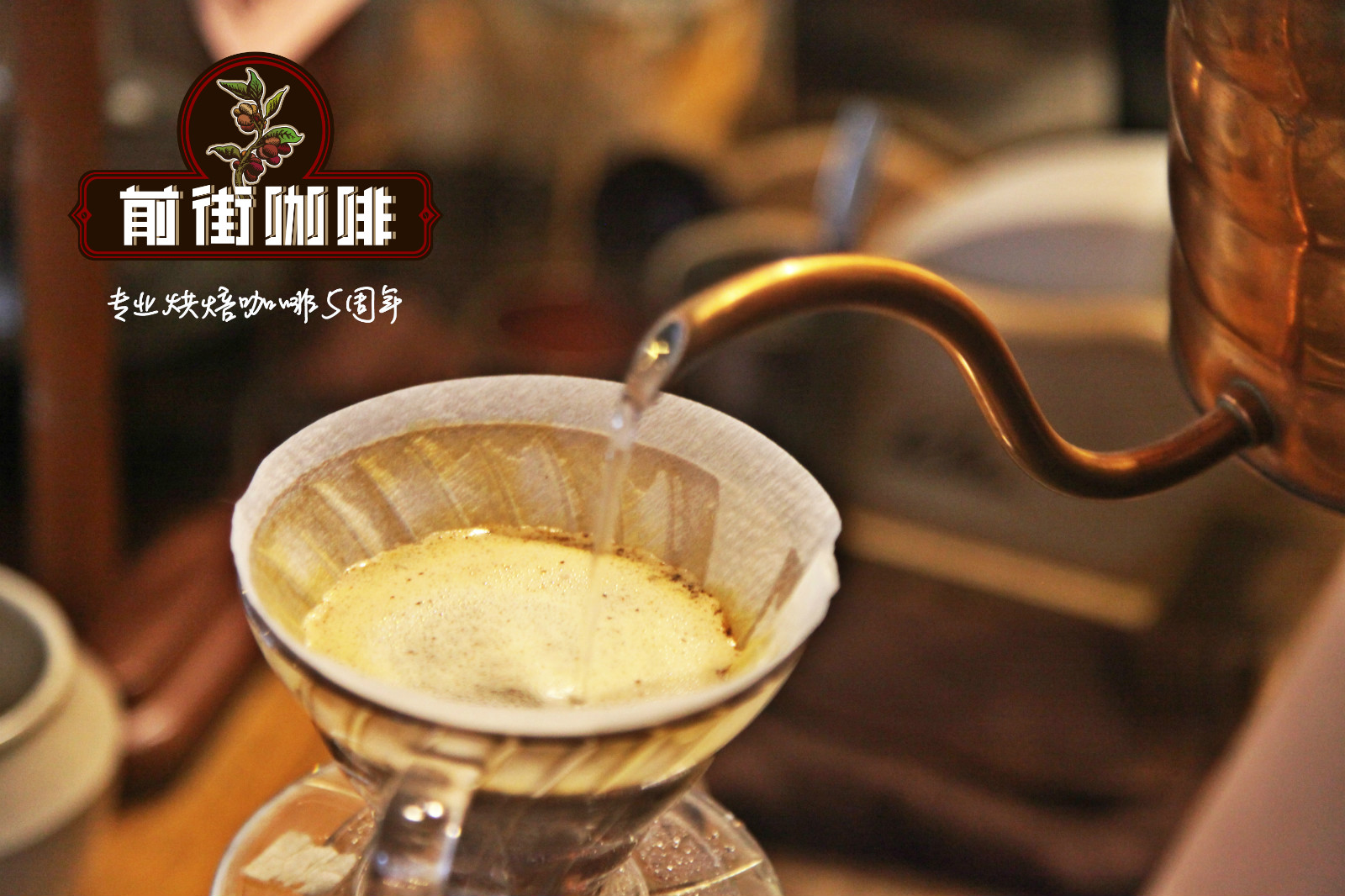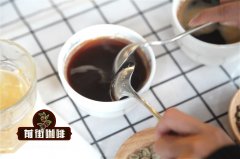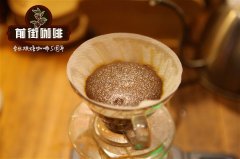How to get rid of the common misunderstanding of hand-brewing coffee how to make good coffee

Professional coffee knowledge exchange more coffee bean information please follow the coffee workshop (Wechat official account cafe_style)
Some time ago, the editor encountered a question from a barista, saying, "Why is my coffee always underextracted?" There is no flavor? " Then I sent a small video to watch the process, and I almost fainted-I used a V60 filter cup, did not stew, injected water directly to the end, and watched the water crash to the end. How can such an extraction bring out the flavor and taste? After asking, a large coffee shop chain has done it, well, this is the cooking plan of a champion video.
Do you know what beans are used by others to win the championship? Did you use any baking degree? Did you use any degree of grinding? If you don't know, you can follow suit, and it's only natural that you can't make good coffee.
So here is the misunderstanding of making coffee by hand, which many people will make: follow the trend.
See a "master" operation rushed out of a good cup of coffee, he also went to learn that set, the result is more and more dissatisfied, but also rely on coffee beans, this is a typical performance of not understanding coffee extraction. You know, every cup of coffee is unique, and what we pursue is the correct and stable extraction rather than copy and paste.
Only by constantly adjusting and judging the extraction state according to the actual situation so as to change the hand parameters used now, the best product is the right way of thinking.
Here the editor leads to the second misunderstanding, that is, the use of appliances.
We all know that there are many kinds of hand-brewed coffee filter cups, mainly because of the structural difference between the cup shape and the inner wall. For example, the spiral pattern of the traditional V60 can slow down the outer flow and enhance the torsional extrusion to improve the extraction of coffee; for example, the flat inner wall of the upper half of the KONO can only exhaust the coffee to create a "pseudo vacuum" in the powder bed during the extraction process, thus siphoning the coffee; or, for example, CHEMEX can create a unique structure for the taste and flavor of pure coffee. And Kalita, cake cup, smart cup and so on.
Some friends will choose these kinds of hand-brewing utensils according to different coffee or roasting degree, and then tell what kind of coffee to use and what coffee will be better, but in the editor's experience, as long as you understand the extraction principle, any kind of utensils can achieve the same excellent brewing.
However, understanding how different instruments work can still help us to avoid wrong extraction, so we will discuss it in terms of two types of extraction. Why are there only two? Because there are actually only two states of hand-brewed coffee-- filtration and soaking, the study of various inner wall lines, techniques and water flow is the field of "madman", which requires very in-depth understanding and discussion. and what we need to do is very simple: a cup of coffee extracted correctly.
Follicular type, represented by V60, and KONO, Kalita, cake cup and CHEMEX also belong to this category. However, different structures do have different states for extraction. In fact, you can get a general idea by observing the shape of the filter cup.
Note that there are two misunderstandings:
1. Choose the right amount of filter cup to extract the corresponding amount of coffee, especially do not use a multi-person cake cup to make one person's coffee, only a thin layer of coffee powder are you sure you are making coffee instead of filter paper?
Why do V filter cups like 2.V60 always go around the size of the middle coin? Why do you say don't inject water to the edge? Because although there are lines in the design and filter paper is attached to prevent "side leakage", the mistake of scouring filter paper is often made by people, which may be too powerful or too close to the outside. in short, the coffee layer affixed to the inner wall of the filter paper will form a "channel", and it is inevitable that the coffee is insipid and tasteless.
The vase CHEMEX of the coffee world is a little different. First of all, it is designed for many people to cook, so do not use the amount of powder for a single person to flush! And it is more dominated by soaking, looking at such a "long" extraction area, if you want to hit the end through a large current, it is recommended to use the American violent flushing method to pour water only in the center to make the bottom coffee powder tumble to a certain extent. then it is injected into the appropriate gouache ratio at one time and then let it filter the coffee ~ the coffee is usually relatively deep-roasted beans, if you use very shallow coffee, you will find that it is easy to block. And the coffee powder did not "climb" to stick to the cup wall to form a filter layer, resulting in light coffee, but if you increase the grinding degree, the water will easily slip away from the insufficient extraction.
Kalita filter cup, common single hole and three hole. Single-hole Kalita is more suitable for medium-depth to deep-roasted coffee, and it can be soaked and filtered by injecting the required water at one time, just like CHEMEX, which is mainly extracted by soaking, while three-hole is suitable for coffee with various roasting degrees, because the flow rate is faster than that of one hole, and the brewing needs to be segmented and stirred according to the situation. For example, at the beginning, the barista used a V60 to operate a single-hole Kalita filter cup, which turned out to be incorrect.
As long as you don't stir too much, the water temperature is too high, and the grinding is too fine, you generally won't make coffee that is too difficult to import.
The last misunderstanding of hand-made coffee, which will make the barista very innocent-- the use of coffee beans
1. We sometimes blindly think that the coffee beans baked by a champion or a well-known roaster are good. As a result, we are beaten in the face "bad coffee" in front of the guests. After being lost, we adjust to brew and offer a cup, but it still doesn't work. To put it bluntly, there is no problem with flushing and baking, but as a barista does not analyze the problem of beans (perhaps because he or she does not know enough about coffee), this may be a misguided mistake. because, as we said in the article on sensory importance, some coffee beans that are supposed to be roasting defects are described as the right flavor.
two。 In addition, due to the lack of understanding of coffee beans (which is a problem for many roasters), the coffee beans provided by raw bean manufacturers may be out of stock-this is a very "commercial" practice. as a result, the roaster gave the wrong roasted coffee beans to the barista to brew, and there must be something wrong with the flavor. Nowadays, the purpose of hand-made coffee is to show the "regional flavor", but if the beans are not that kind of product, what else can they do? So baristas should at least have some knowledge of coffee cooked beans, at least be able to judge whether roasting is defective, and it is best to tell whether coffee is the right product (which is more demanding).
The above is only the editor's personal experience and point of view, what we want is to get a cup of coffee that is correctly extracted and delicious, and any spiritual operation in the middle also increases the process of enjoyment and appreciation. and the understanding of coffee beans can make you better show it (at least not the wrong object) ~ the most important thing is to make coffee with a joyful heart, then your good mood will flow into the coffee cup.
Related recommendation: is hand-made coffee really good? Why does coffee smell better than it tastes?
Important Notice :
前街咖啡 FrontStreet Coffee has moved to new addredd:
FrontStreet Coffee Address: 315,Donghua East Road,GuangZhou
Tel:020 38364473
- Prev

Flavor characteristics of Arabica Coffee how to make Arabica Coffee
Professional coffee knowledge exchange more coffee bean information please follow the coffee workshop (Wechat official account cafe_style) Medium-bodied with tart and sweet notes medium bean body with sweet and sour flavor 100% Arabica coffee grows in Organic and Fair Trade Certified Organic, Peru
- Next

Water injection techniques and techniques for hand-brewed coffee explain how to inject water into hand-brewed coffee
Professional coffee knowledge exchange more coffee bean information Please pay attention to the coffee workshop (Wechat official account cafe_style) handmade coffee is probably the most common method of brewing it is one-size-fits-all and segmented extraction. The name "one knife flow" sounds very interesting, very much like a martial arts move in a martial arts novel. The secret meaning of this method of brewing coffee by hand is steaming.
Related
- Beginners will see the "Coffee pull flower" guide!
- What is the difference between ice blog purified milk and ordinary milk coffee?
- Why is the Philippines the largest producer of crops in Liberia?
- For coffee extraction, should the fine powder be retained?
- How does extracted espresso fill pressed powder? How much strength does it take to press the powder?
- How to make jasmine cold extract coffee? Is the jasmine + latte good?
- Will this little toy really make the coffee taste better? How does Lily Drip affect coffee extraction?
- Will the action of slapping the filter cup also affect coffee extraction?
- What's the difference between powder-to-water ratio and powder-to-liquid ratio?
- What is the Ethiopian local species? What does it have to do with Heirloom native species?

